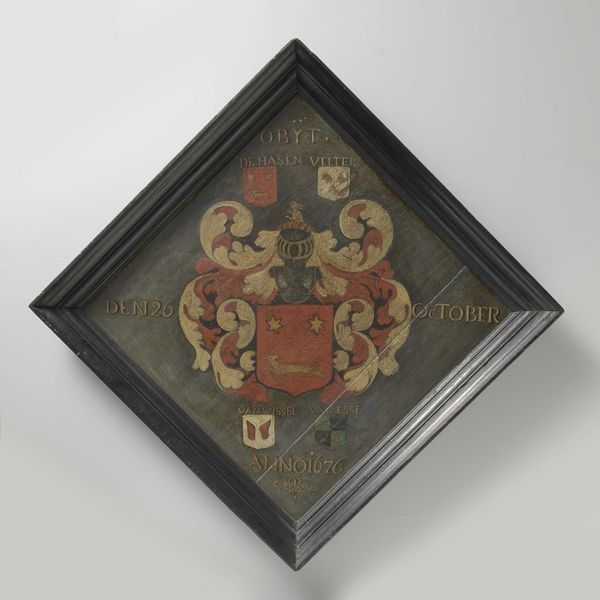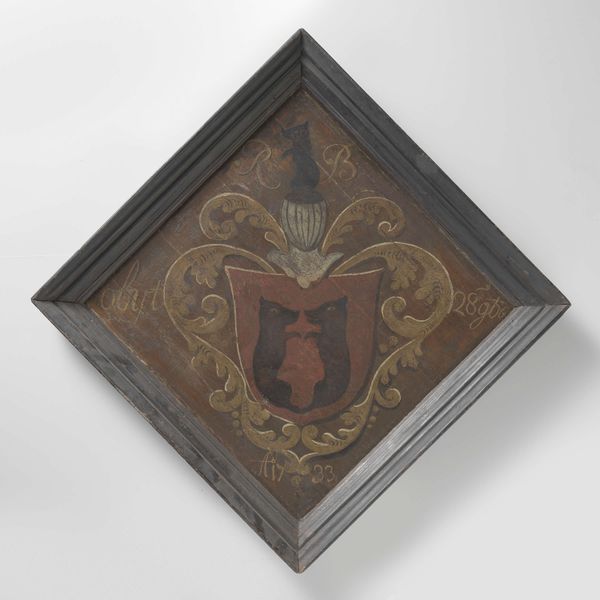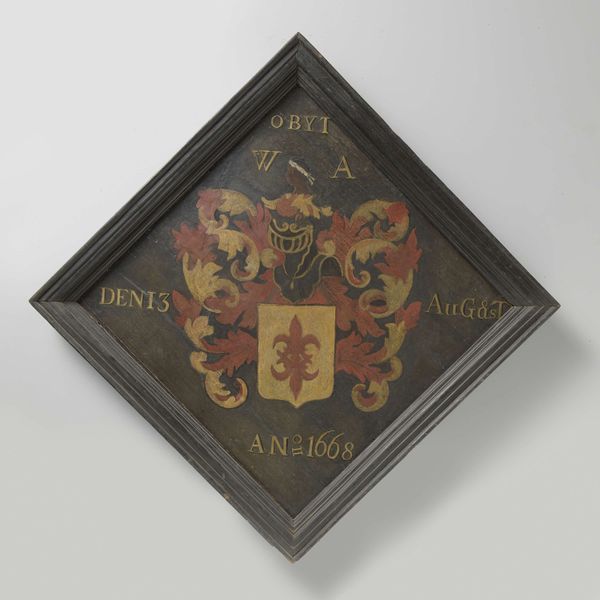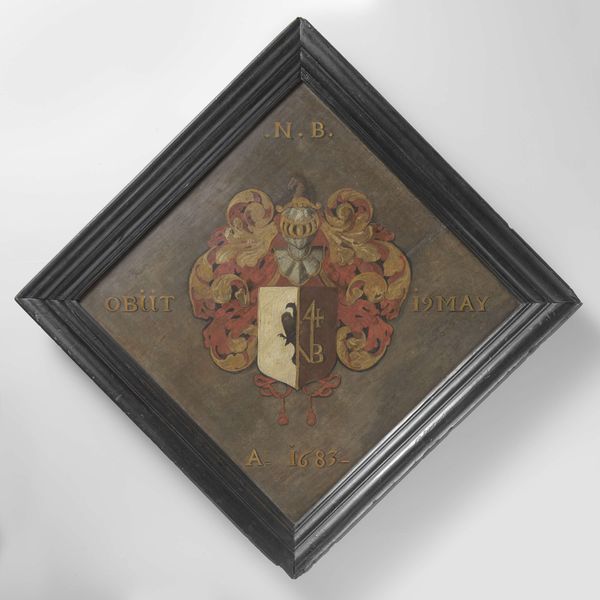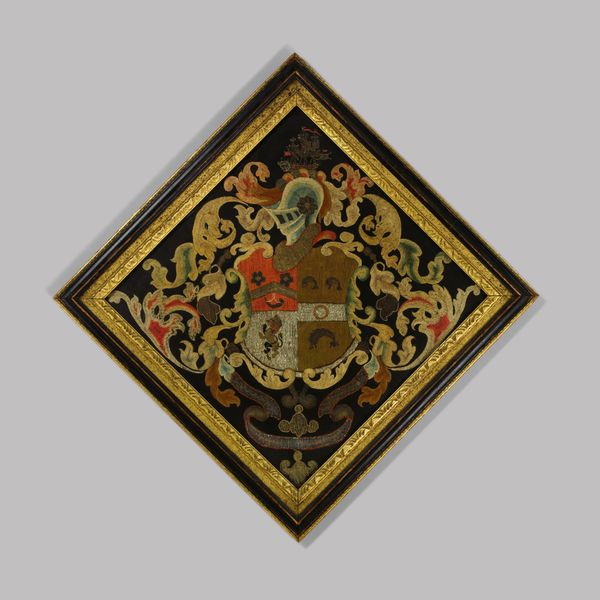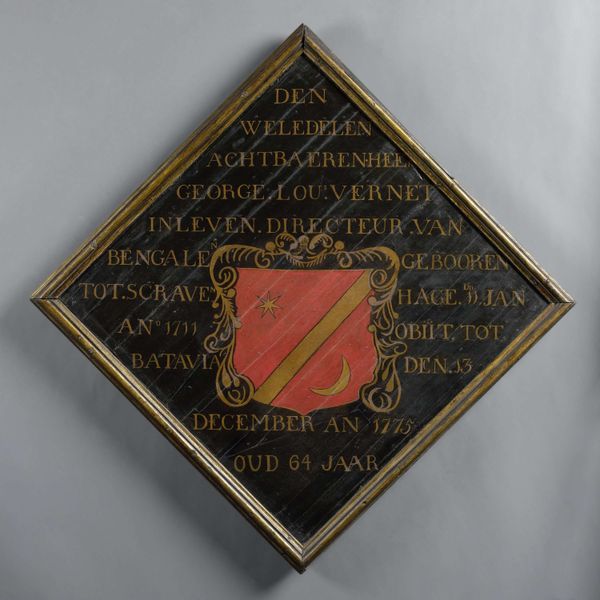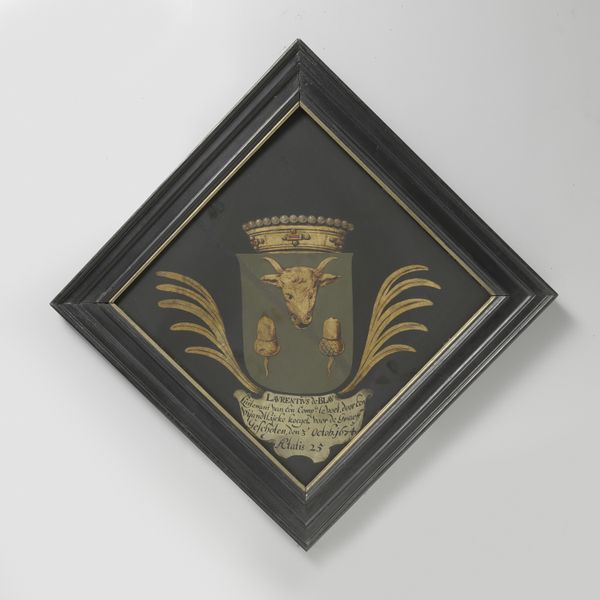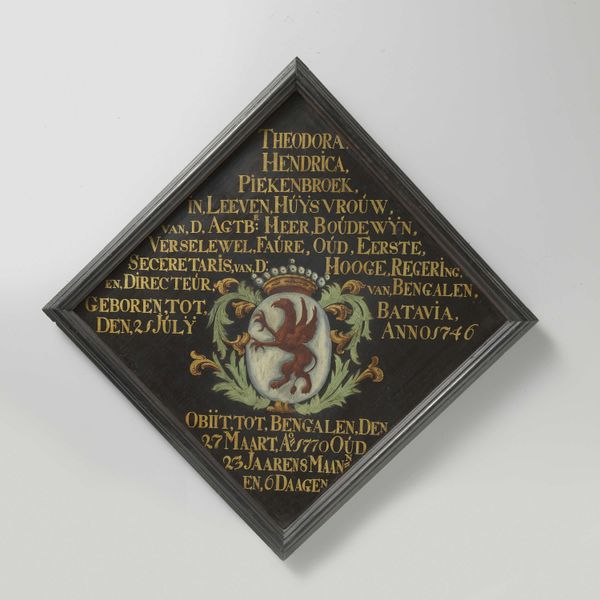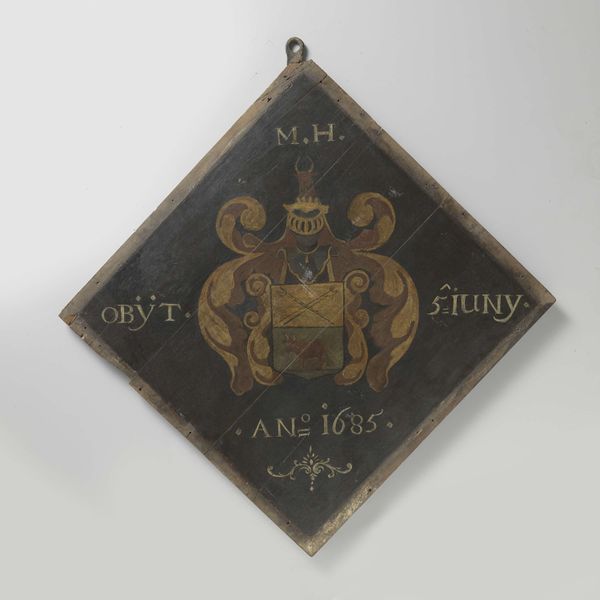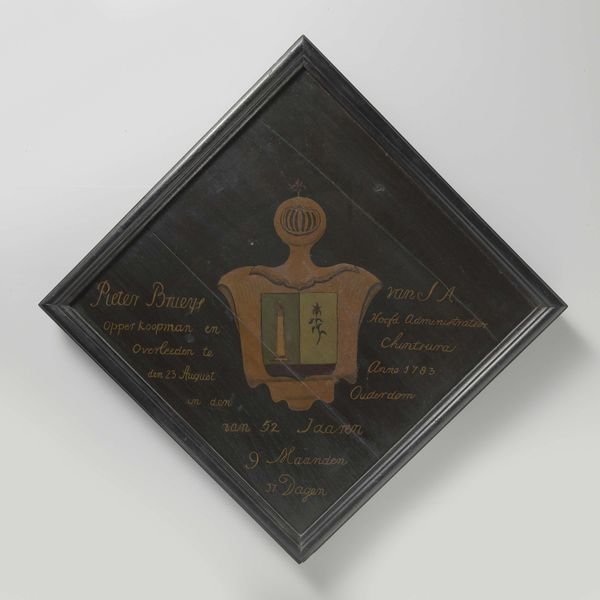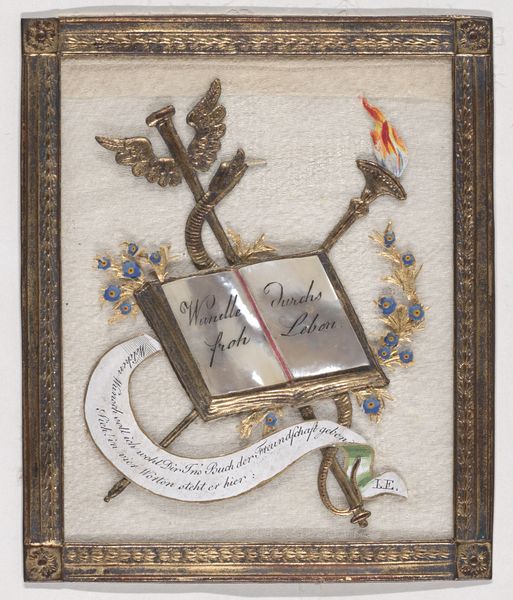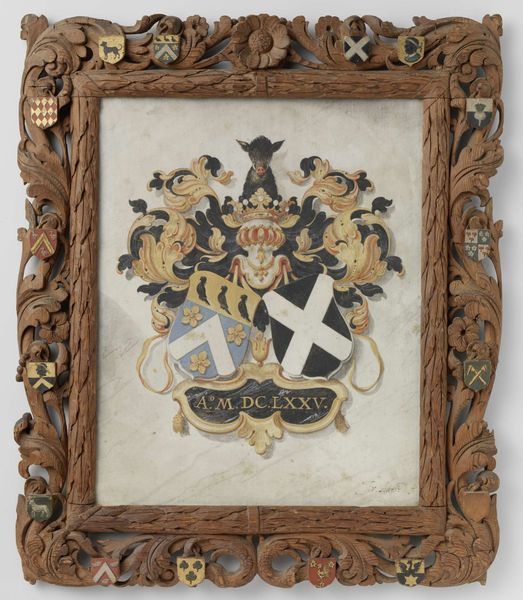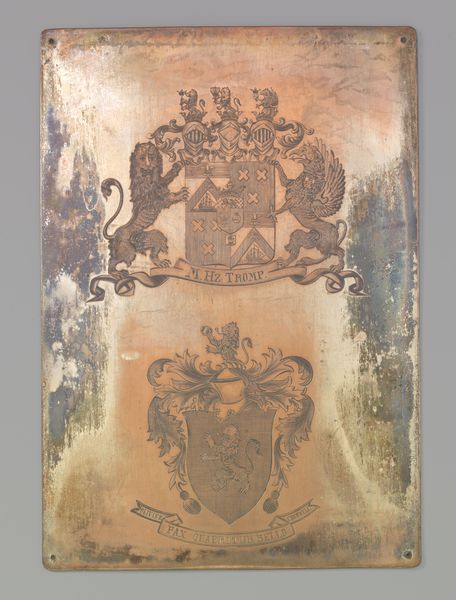
Grafbord van Rogier van Heijningen (gestorven 1665), directeur van Bengalen (1663-65) Possibly 1665 - 1669
0:00
0:00
mixed-media, panel, painting
#
portrait
#
mixed-media
#
panel
#
baroque
#
painting
#
geometric
#
history-painting
#
decorative-art
Dimensions: height 122 cm, width 121 cm, depth 9 cm
Copyright: Rijks Museum: Open Domain
Curator: Let’s turn our attention to this intriguing piece, “Grafbord van Rogier van Heijningen (gestorven 1665), directeur van Bengalen (1663-65)." It's believed to date between 1665 and 1669, commemorating a director of the Dutch East India Company in Bengal. It appears to be mixed media on panel, combining painting and decorative elements. Editor: My first impression? It feels…foreboding. That square, almost diamond shape, coupled with the muted colors – particularly the pale green – lends a very somber air. Curator: A Grafbord, or hatchment, was typically created upon someone's death, particularly for nobility or those of social standing. The geometric layout and heraldic display served to communicate status, lineage, and often religious affiliation to the public. Van Heijningen’s directorship makes this a clear visual statement of power. Editor: Yes, power carefully constructed through symbolism. Note the placement of the coat of arms. The lion, for instance, it's not just a generic lion – heraldically speaking, its position, the way it is depicted with only one head, tells us something specific about his familial right and attributes. These symbols offered a codified language instantly understandable within that societal framework. Curator: And crucial to note, its function. Hatchments were displayed prominently – on houses or even during the funeral procession – effectively projecting authority into the public sphere even after the person's death. Think of it as an early form of political branding. Editor: What strikes me about this piece, beyond its historical significance, is its slightly worn condition. It lends a certain gravity. Curator: Precisely. The passage of time only strengthens the stories embedded within. In its original setting, displayed prominently, this image was potent. Now, we look at it and try to decode these meanings within our modern understanding. Editor: Indeed, objects like this serve as portals. We get to peek into the values, beliefs, and even anxieties of a very different world, preserved through this symbolic display. Curator: Absolutely. This Grafbord speaks volumes about the society and the status that Rogier van Heijningen occupied within it. Editor: A frozen moment of authority echoing across the centuries. Food for thought.
Comments
No comments
Be the first to comment and join the conversation on the ultimate creative platform.
